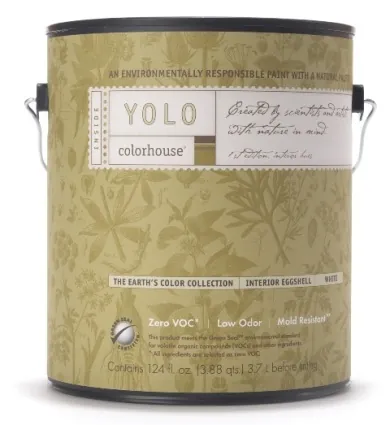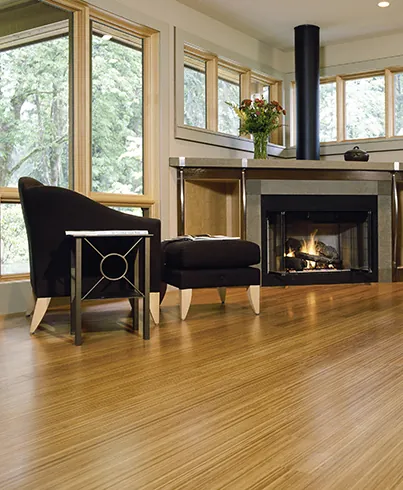Wouldn't it be great to own a home that was healthier than the average residence? What if it was also extremely energy efficient, reduced pollution, and conserved natural resources?

Find House Plans
Building Green is incorporating these amazing features into the average home design, taking standard housing above and beyond. Building Green is not a specific movement or actions taken when building new homes. More accurately it is about utilizing growing environmental awareness in as many aspects of home design as possible.
Right off the bat, you should understand that it can be extremely difficult to "green" your home entirely. Your budget, lot, and even such basics as the climate in your area, will all affect what green features are practical for your home. Do not be discouraged if you have to make substitutes and alterations – any green aspect you can incorporate is reducing your demand on nature. With all the green choices that are currently flooding the market, it can be difficult to know where to begin. By looking at the five major characteristics of being "green," homeowners can better determine what green concepts can best be used in their homes.

Ecological Footprint
An ecological footprint is the demand we each place on nature. By reducing consumption and utilizing low-impact, sustainable goods, we can bring nature and today's society back in balance.
Low VOC Products: Volatile organic compounds (VOCs) evaporate readily at room temperature and contribute greatly to indoor air pollution. When purchasing paints, finishes, sealers and adhesives, look for low VOC options. The market has greatly expanded the color and brand options for low VOC paints in the past few years.
-
Reclaimed & Engineered Lumber: Reclaimed lumber is wood salvaged from long standing unoccupied buildings. It is repurposed into construction materials, flooring, and other facets of interior decor. Many admire reclaimed wood for the unique combination of antique beauty and uncompromised durability. Engineered wood is comprised of wood "waste" such as strands, particles, and fibers from sawmills that are bound with adhesives and form man-made wood products. This composite wood is used in similar ways as solid wood products while reducing waste of natural resources.

Natural Materials
Respecting and utilizing natural materials in as many building aspects as possible will create a healthy and gentle living environment for everyone.
-
Cork and Bamboo Flooring: Cork is taken from bark without the felling of trees and it regenerates within 10 years, making it a rapidly renewing resource. With high insulation values, sound-proofing and shock absorbing capabilities, cork is a durable family-friendly flooring alternative. Bamboo flooring is the environmentally friendly alternative to hardwood floors. It is ideal for those desiring the elegance of hard wood floors while reducing their environmental impact. Unlike, some traditional flooring materials, both are formaldehyde free, ensuring healthy indoor living environments.
-
Green Roofing: Green roofing is a rooftop that is partially or entirely covered by vegetation and soil layered over a waterproof membrane. One of the advantages to green roofing is the direct decrease of heating and cooling loads – the vegetation utilizes the direct sunlight, warding off absorption by the building. Reduction of storm water runoff and filtering of pollutants are other positive environmental impacts.
Resource Conservation
Part of being "green" is making sure we use our resources wisely. It is important not to abuse what we have so future generations can access the same resources. Reducing consumption reduces the negative impact we have on nature.
-
Solar and Geothermal Energy: Reducing the consumption of fossil fuels is an on going battle in Building and Living Green. Utilizing solar and geothermal energy helps this process immensely and creates healthier home environments along the way. Geothermal energy supply is practically unlimited, requires very little energy to remove, and produces no fossil fuel emissions. Solar energy is extremely flexible when it comes to mounting options – walls, windows, ceilings, and shingles are all points of collection. These multi-functional systems can be used to heat water, deliver heating and cooling throughout homes, and can even allow some homes to move entirely off-grid.
-
Daylighting and CFLs: Daylighting is the practice of utilizing natural light indoors in the place of electric lights. Skylights, light tubes, and light reflectors are put in place to direct natural light into rooms in addition to basic windows. Daylighting can also be used in conjunction with passive solar energy. Compact fluorescent light bulbs (CFLs) are replacing incandescent light bulbs as they use approximately 1/5 the energy while lasting 8 to 15 times as long. The savings in energy consumption make up for the slight cost increase.
Recycled Goods
You may have heard the phrase "reduce, reuse, recycle" many times before, but have you tried to incorporate it into your lifestyle? Many people think recycling is simply one extra thing on the "To-Do" list, but by reducing your consumption, reusing what you already have, and recycling what you cannot put to use, you show respect for your environment while cutting costs. Tossing that soda can into a recycling bin is as easy as tossing it in the trash, but will not harm the environment. In some areas, you may even get money back for all those recycled goods!
-
Construction Waste: While building your dream green home, discuss with your contractor what plans they have for eliminating construction waste. This does not refer to plans to haul it from the site, but what will become of it. Much construction waste can be repurposed rather than thrown out. Make sure your contractor will not trash what can be reused or recycled.
-
Reusable Shopping Bags: An estimated 380 billion plastic bags, baggies, and wrap are consumed in the United States each year. These products are not biodegradable, but do photodegrade – reducing into small bits that contaminate ecosystems and food chains. By simply remembering to use reusable shopping bags on each grocery run, you can help break this destructive chain. Some countries around the world are even going so far as to phase-out and ban plastic bag distribution by retailers (Australia) and others are placing a plastic tax for every bag distributed (Ireland). If you do receive plastic bags, be sure to recycle them rather than tossing them – most retailers provide recycling bins on-site.
-
Composting: More intensive than reusing shopping bags, composting can reduce your waste output dramatically. Using worm bins or other composting means for food and garden waste eliminates half of the average person's trash. This compost is perfect to use in your home's landscaping, ensuring that you get the most use out of everything you have.

Handmade & Fair Trade
Handmade and fair trade products support fair wages, safe working conditions, and sustainable goods of high quality. By making use of these products, you support and respect societies all over the world who are working for long-lasting healthy environments.
-
Furniture: The market for eco-friendly furniture is booming as artists and designers take on the challenge of repurposing unimaginable materials into your soon-to-be favorite chair, table, or love seat. From old seatbelts to twisted driftwood, eco-friendly furniture is changing the way we look at design.
-
Fabrics and Fibers: Many conventional fibers that make up our clothing, knitting, and upholstery are doused in chemicals to stimulate growth while warding off pests. However, these chemicals seep into water and soil, infiltrating our lives and our bodies. By taking advantage of fibers such as hemp, cruelty-free silk, and organic cotton and wool, you support low-impact living and fair-trade in any aspect of your life that requires some textile.
Remember that the examples provided are simply drops in the ocean that is Building and Living Green – what you incorporate is a personal choice. Determine what environmental issues are most important to you and start looking at ways to combat them as you Build and Live Green. Take the time to thoroughly research your options and discuss them with your contractor. You may also look into getting your dream home "green" certified.
The U.S. Green Building Council is responsible for the Leadership in Energy and Environmental Design (LEED) program that developed a commercial construction rating system. This has since expanded into LEED for Homes allowing similar ratings to be performed on residential buildings. In either case, LEED certification requires a third party to evaluate the building to earmark what credits have been earned. For home building, levels of Certified, Silver, Gold, or Platinum are available to be reached at various stages of construction. The National Association of Home Builders also offers a certification program through its own Green Home Building Guidelines.
These certifications are important in ensuring that your Building Green is indeed green. Any reputable green contractor will be able to discuss either certification program with you and how it can apply to your green home. Be sure and discuss thoroughly what you are hoping to accomplish to ensure you receive the green home you desire.
Once your dream green home has broken ground, remember that Building Green does not stop when the structure is finished. Part of Building Green is Living Green – remembering to reduce, reuse, and recycle while investing in fair-trade and handmade goods. All these building and living practices can result in a low-impact lifestyle your family will be proud to lead.
Here are some related articles:
Save this article to:
back to top